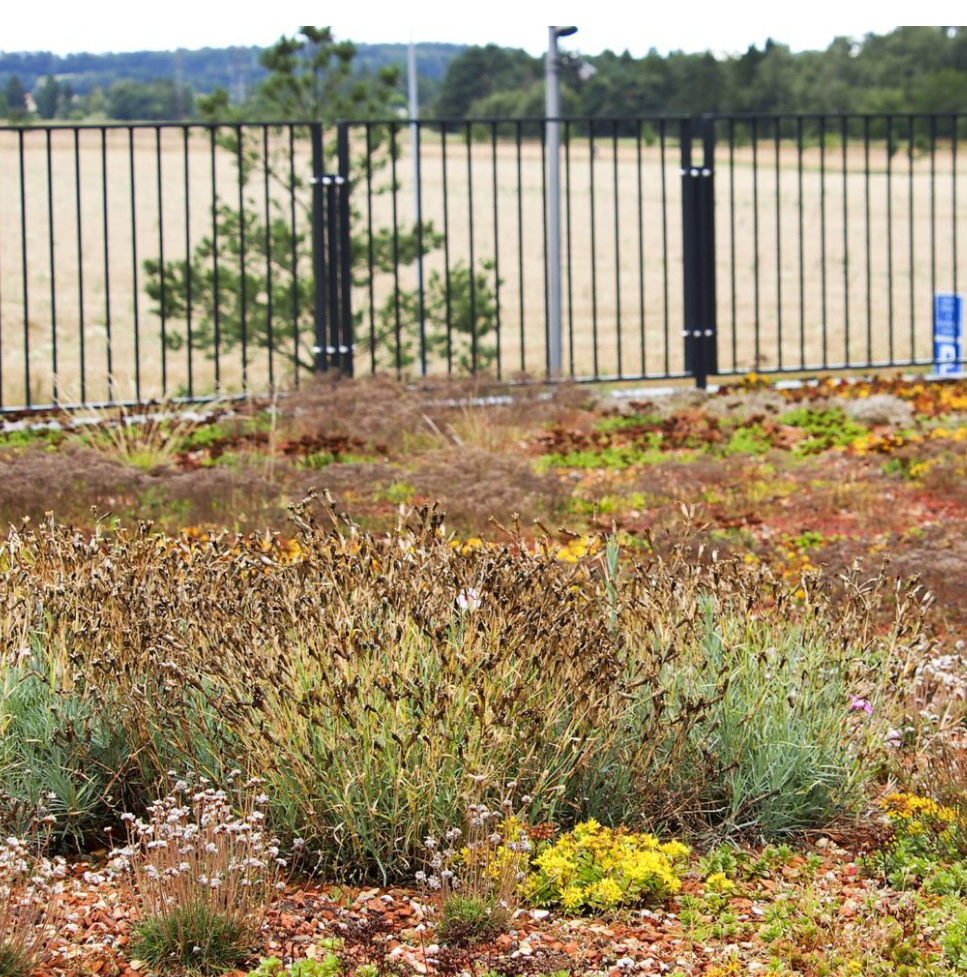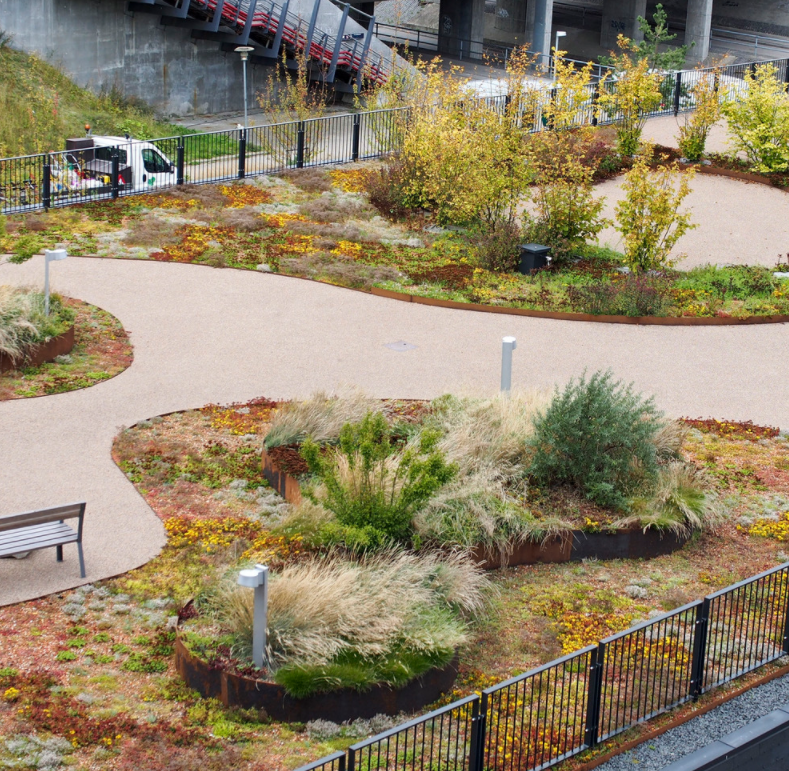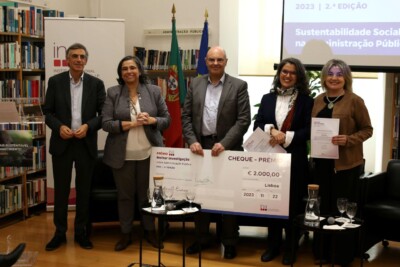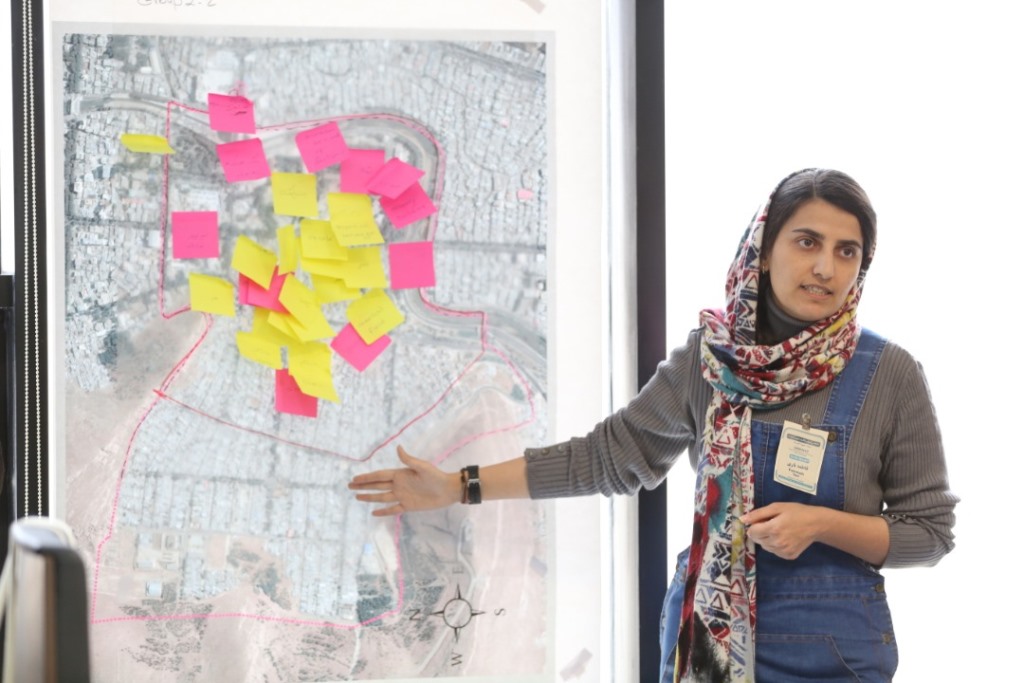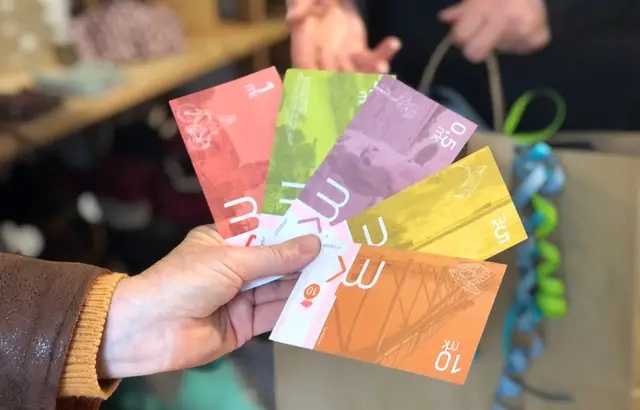CHALLENGES ADDRESSED
Score impact
Nature
Wellbeing
Health
Mobility
Participation
Economy
DESCRIPTION
Green roofs serve several purposes for a building, such as absorbing rainwater, providing insulation, creating a habitat for wildlife, increasing benevolence and decreasing stress of the people around the roof by providing a more aesthetically pleasing landscape, and helping to lower urban air temperatures and mitigate the urban heat island effect.
The roof of a building, a parking lot or some other build structure can be covered by vegetation that grows over an impermeabilization membrane and a soil substrate. Intensive green roofs are suitable for human use and flow of people. Extensive green roofs are not suitable for human use but require low maintenance and can have major ecological and economic benefits.
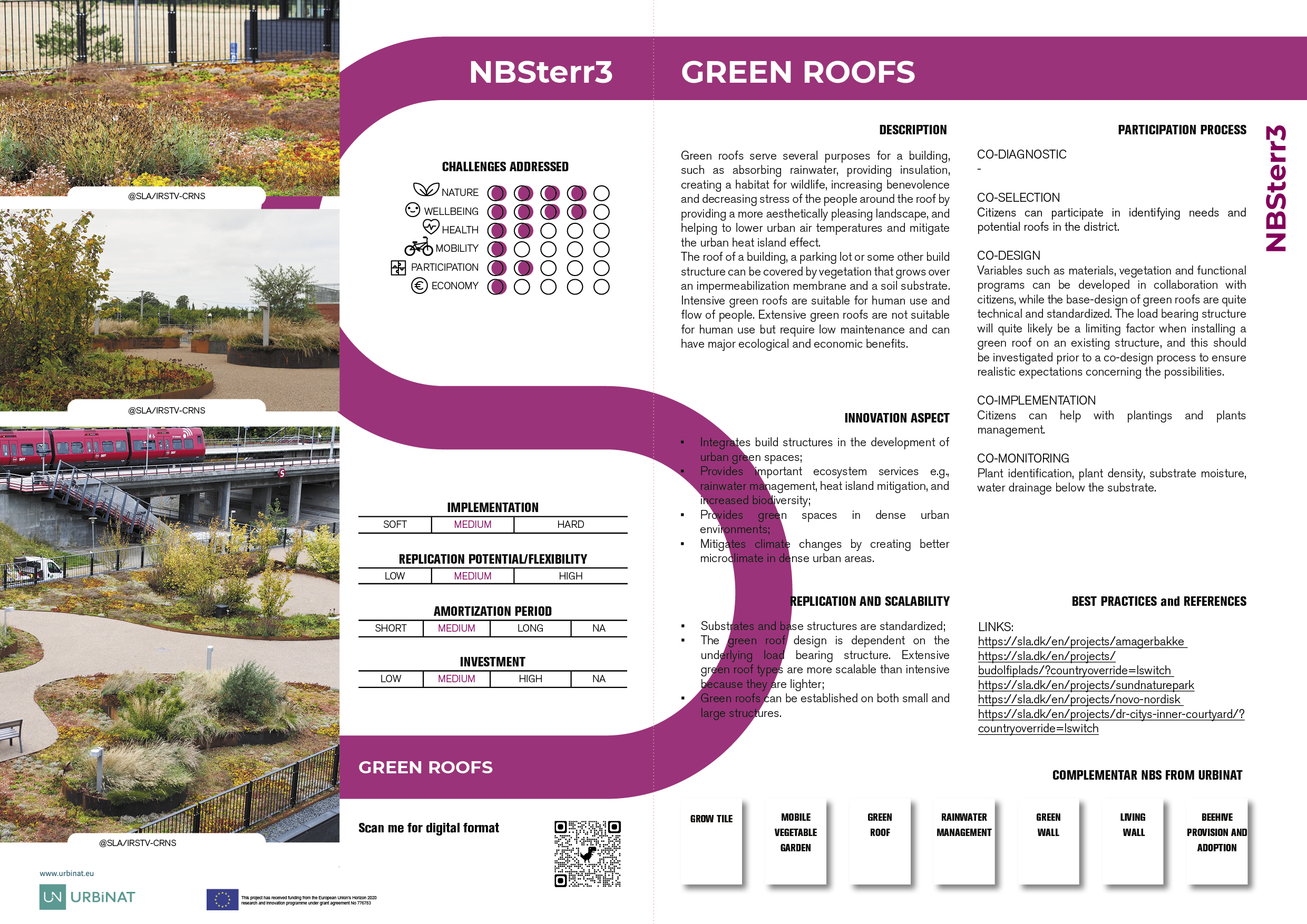
[PDF Download] Green Roofs
Green roofs serve several purposes for a building, such as absorbing rainwater, providing insulation, creating a habitat for wildlife, increasing benevolence and decreasing stress of the people around the roof by providing a more aesthetically pleasing landscape, and helping to lower urban air temperatures and mitigate the urban heat island effect.
The roof of a building, a parking lot or some other build structure can be covered by vegetation that grows over an impermeabilization membrane and a soil substrate. Intensive green roofs are suitable for human use and flow of people. Extensive green roofs are not suitable for human use but require low maintenance and can have major ecological and economic benefits.
INNOVATION ASPECT
- Integrates built structures in the development of urban green spaces.
- Provides important ecosystem services e.g., rainwater management, heat island mitigation, and increased biodiversity.
- Provides green spaces in dense urban environments.
- Mitigates climate changes by creating better microclimate in dense urban areas.
REPLICATION AND SCALABILITY
- Substrates and base structures are standardized.
- The green roof design is dependent on the underlying load bearing structure. Extensive green roof types are more scalable than intensive because they are lighter.
- Green roofs can be established on both small and large structures.
PARTICIPATION PROCESS
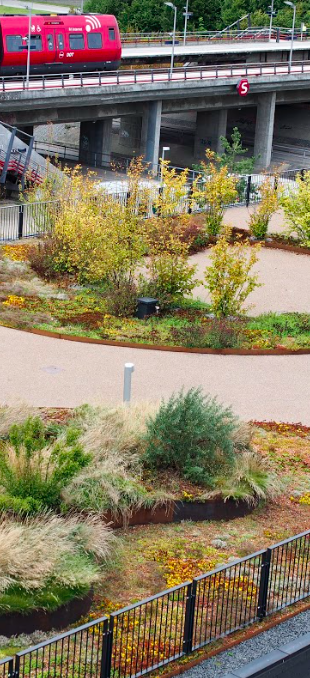
-
1
Co-selection
Citizens can participate in identifying needs and potential roofs in the district.
-
2
Co-design
Variables such as materials, vegetation and functional programs can be developed in collaboration with citizens, while the base-design of green roofs are quite technical and standardized. The load bearing structure will quite likely be a limiting factor when installing a green roof on an existing structure, and this should be investigated prior to a co-design process to ensure realistic expectations concerning the possibilities.
-
3
Co-implementation
Citizens can help with plantings and plants management.
-
4
Co-monitoring
Plant identification, plant density, substrate moisture, water drainage below the substrate.
Best Practices and References
SLA: Amager Bakke, Copenhagen
SLA’s design of a green rooftop park for Copenhagen’s new waste-to-energy plant combines hiking trails, playgrounds, vantage points, climbing walls and street fitness – along with a 500+ meter ski slope designed by BIG. All of it created within a wild and sensuous mountain nature with plants, rockscapes, 7000 bushes and 300 trees. The experimenting use of the steep pitched roof, places high demands on the plant and landscape design.
SLA: Budolfi Square and Algade, Aalborg
SLA is behind Aalborg’s new, green urban spaces and pocket parks on Budolfi Square and Algade. Together, they connect the city’s pedestrian streets and offer new conditions for city life and community in Aalborg’s historic center. .
SLA: SUND Nature Park
The inspiration for the landscape surrounding the new Mærsk Building was found in the history of the location and it’s unique atmosphere. The Panum Institute is an educational institution with a long history and tradition as well as a modern research central, with thousands of daily users.
SLA: Novo Nordisk Nature Park
The landscape surrounding Novo Nordisk’s new head quarter is an interpretation of the phenomenon known from Danish woodlands; the dead-ice landscape. The Nordic landscape shapes and the rich nature biotopes emphasize Novo Nordisk’ strong and distinct brand and mediates the company’s unconditional commitment to innovation.
SLA: DR City's inner courtyard
With a basis on the potentials and constraints of the existing conditions, SLA has converted the DR City’s inner court yard into an inviting space for informal recreational breaks in the busy everyday life at DR.


